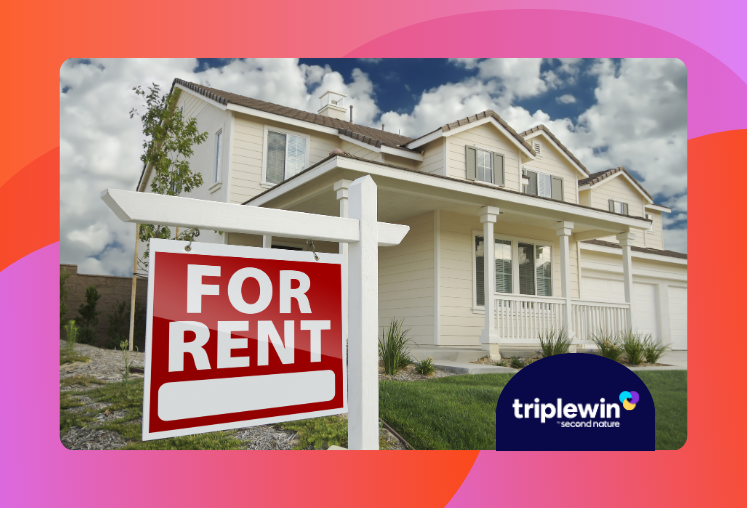As incredibly busy single-family and multifamily property managers, staying informed on the latest industry trends and resources on top of your ever-increasing list of to-dos can feel near impossible. But thankfully, there is now a wealth of excellent industry podcasts to do the hard work of staying up to date. All you have to do is tune in.
Property management industry podcasts make it extra easy for you to gain insight, advice, and practical tips while commuting, cooking dinner, or working out. By listening to industry thought leaders and experts, you'll learn new ideas and perspectives on improving your strategies and ultimately growing your business.
We've combed through all of the property management podcasts to find you the eight best ones. And we've made sure they meet the following criteria:
- The podcast's relevancy to your role as a single-family property manager – With so much information tailored to multi-use property managers, it can be hard to find industry insight into your particular challenges and industry issues.
- The caliber of the hosts and their guests – we looked for those run by reputable sources endorsed by trusted associations, organizations, and professionals in the property management business.
- Content quality and diversity of topics – We wanted to see that the podcast covered a wide spread of topics—from real estate investing to leasing challenges to tips like building your cash flow—and provided a well-rounded perspective on the industry.
- Actionable insights – We looked for podcasts that provided practical tips, strategies, and advice you can readily implement in your day-to-day work as a property manager.
- Length and accessibility – We all know how tiring it can be for a podcast to drone on and on. We looked for ones that were under an hour and were accessible, engaging, and even entertaining.

1. Triple Win Podcast
The Triple Win Podcast is hyper-focused on the needs and challenges of single-family property managers. With each topic it addresses, The Triple Win Podcast looks at how property managers can create and monetize value for their company while also building strong working relationships. Its core focus is finding solutions that are a win-win-win for everyone involved—residents, real estate investors, and property managers alike.
The Second Nature team hosts the podcast and invites experts across the industry to discuss topics such as using Practical AI for property management, turning customers into superfans, and tips for revenue building, annual goal planning, and more.
The Triple Win Podcast is released twice a month and can be listened to here, and for more insights, subscribe to one of these property management newsletters.
2. Owner Occupied with Peter Lohmann
Owner Occupied is an interview-style podcast. Each week, Peter Lohmann invites experts from across the industry to discuss the business side of property management. Lohmann covers super granular topics (like competing with the 3% management fee) and ones that look at the big picture (like how to know which opportunities to pursue and which to let go). Lohmann interviews experts such as Michael Girdley of the Complete HoldCo Course, Todd Ortscheid of Always There Repair, and Brandon Scholton of Key Renter Denver.
The best part of this podcast is that Lohmann lists the time stamps in the description. So, if you don't have time to listen to the full interview, you can easily skip to the parts that most interest you. Find Owner Occupied on Spotify here and tune in weekly for valuable information and insightful interviews.
3. Property Management Business with Marc Cunningham
Marc Cunningham of PM Build works tirelessly to help property managers build their people, profit, and processes. And he shares a wealth of industry tips in his podcast Property Management Business.
Each episode is less than 30 minutes, making it incredibly accessible and easy to fit into your day. Marc brings an optimistic and grounded perspective to the industry, inspiring property managers to build strong working relationships with property owners, tenants, and realtors. He also encourages property managers to simplify maintenance and discover the industry's exciting future. Tune in for new episodes each month and be inspired to grow your business here.
4. The Profitable Property Management Podcast
Do you love to hear success stories of non-stop go-getters? Well then, The Profitable Property Management Podcast is for you. The host, Jordan Muela, has worked in the industry for over ten years, started three businesses, hiked the Grand Canyon to raise money, launched two podcasts, and released the industry's first financial benchmarking study. And he brings all of that energy and expertise to his interview-style podcast.
"This podcast is dedicated to the property manager entrepreneurs that refuse to settle in life and business," says Muela. And it's clear he's walked the talk.
Tune in to his weekly podcasts on Apple, Spotify, or wherever you like to listen. He'll inspire you to find meaning at work, boost your profit margins, and stay resilient as you navigate the daily challenges of property management.

5. 300 to 3,000
300 to 3,000 is hosted by Matthew Whitaker and Spencer Sutton of Evernest. The episodes vary from 30 minutes to over an hour and a half, but because they are chock-full of tips for adding new properties to your portfolio, we decided to include it in our round-up.
Evernest is a national property management company that grew out of necessity. When the 2008 economic crisis happened, Matthew Whitaker owned 30 investment properties he was desperate to sell but couldn't. Using all of their creativity and gumption, Matthew and Spencer launched their property management company. They have grown from the rockiest start to a thriving property management business that oversees 15,000+ properties across the U.S.
Every week, Matthew and Spencer provide industry insight from an incredibly thoughtful perspective. They cover interpersonal dynamics (Episode 82: Trying to Build a Great Team? How Trust and Conflict are Essential), the emotional strain of property management (Episode 61: How to Find Clarity in the Middle of Painful Problems), and practical business tips (Episode 55: How to Grow Your Maintenance Department). Tune in here.
6. NARPM Radio
The industry's most trusted association is the National Association of Residential Property Managers (NARPM). NARPM hosts conferences and trade shows, provides courses and webinars, advocates for policies that affect property managers, and offers ample networking opportunities for PMs. It's no surprise that their podcast is also an excellent resource.
Twice a month, host Pete Neubig interviews different industry experts and provides invaluable insight into the various aspects of property management. Learn how to identify your business's core values, stay focused while growing your business, navigate property management taxes, and more. Connect with the organization on social media and catch the latest episodes here.
7. The Property Management Mastermind Show
Like The Triple Win Podcast, The Property Management Mastermind Show focuses on single-family property management and is thus a valuable resource for those in that specific sector. Host Brad Larsen owns RentWerx, one of the fastest-growing property management companies in Texas. Brad brings his own hands-on experience to each episode and provides listeners with insight into the latest trends, best practices, tips for vendors, and more.
Catch his weekly episodes here and take your property management strategies to the next level.
8. Property Management Brainstorm
This podcast focuses primarily on maximizing your property value and raising your income while maintaining strong relationships with your tenants. Host Bob Preston brings his experience as a Silicon Valley technology executive to the property management space, guiding PMs on using the right technology and implementing effective operations to streamline and scale their businesses.
Every week, Bob interviews other industry experts to help property managers think through business strategies and operations. Earlier this summer, Bob re-released our conversation on pest control in rental properties. It was such a delight to chat with Bob and I'm honored they have dubbed it one of their best episodes ever. Tune in to the full Property Management Brainstorm podcast here.
9. The Property Management Show
The Property Management Show podcast, created by Brittany Stephens and Marie Liamzon-Tepman of Fourandhalf, Inc., breaks down the keys to business success with insights from industry experts.
Launched in 2015, the podcast covers topics such as marketing strategies, industry innovations, and best practices for running a successful property management business.
All content is based on the expertise of the folks at Fourandhalf, a marketing agency specializing in helping fee-based property management companies grow through services like website design, SEO, content creation, and online advertising.
Catch show episodes here.
Alright, there you have it—our nine favorite industry podcasts. We would love to hear which ones you enjoy the most and which ones you would add to the list. Happy listening!
Topics:




